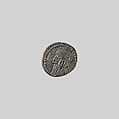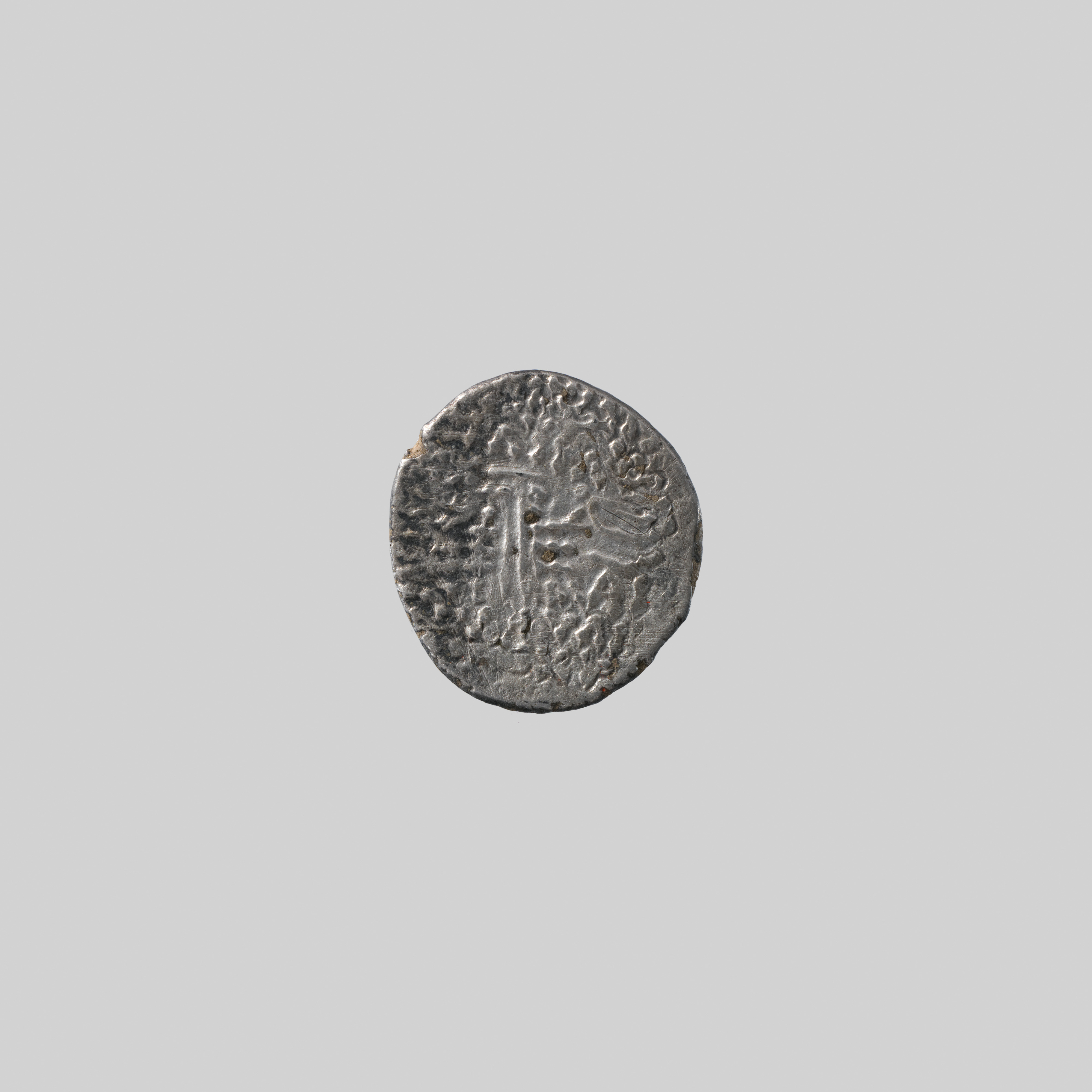Drachm
Not on view
Numismatists – the scholars who study coins – refer to the ‘front’ side of the coin, which usually features the head of a person or god, as the ‘obverse,’ and the ‘back’ side as the ‘reverse.’
On the obverse of this silver coin, a bust of the king faces to the left. He has a long beard rendered with vertical lines, and wears a domed hat with earflaps (called a ‘tiara’) with a diadem (the headband worn by victorious athletes in ancient Greece) tied over it. The tiara is decorated with indistinct protrusions. He also wears a torque or necklace around his neck. His large eye is represented by a raised dot between two thick lines which serve as his eyelid. A border of dots surrounds the image.
The reverse of this coin is in poor condition, in part due to having been struck by a very worn die. Based on comparisons with other coins, it is safe to say that the reverse shows a seated man facing right. He wears sleeves and trousers under a cloak, as well as a diadem, of which only the ends are visible at the back of his head. In his hand he holds a bow with the bowstring upwards. An illegible inscription surrounds the man.
This coin was struck by the Parthian king Vologases III (reigned ca. A.D. 147–191). The king on the obverse is probably meant to be Vologases himself, wearing a diadem as a symbol of victory and a tiara, the main type of Parthian royal crown. The identity of the figure on the reverse is unknown; perhaps it is an idealized Parthian king, depicted as an archer. The head of Vologases the obverse exhibits significant stylization, such as in the schematic rendering of the eye and beard.
This image cannot be enlarged, viewed at full screen, or downloaded.
This artwork is meant to be viewed from right to left. Scroll left to view more.




